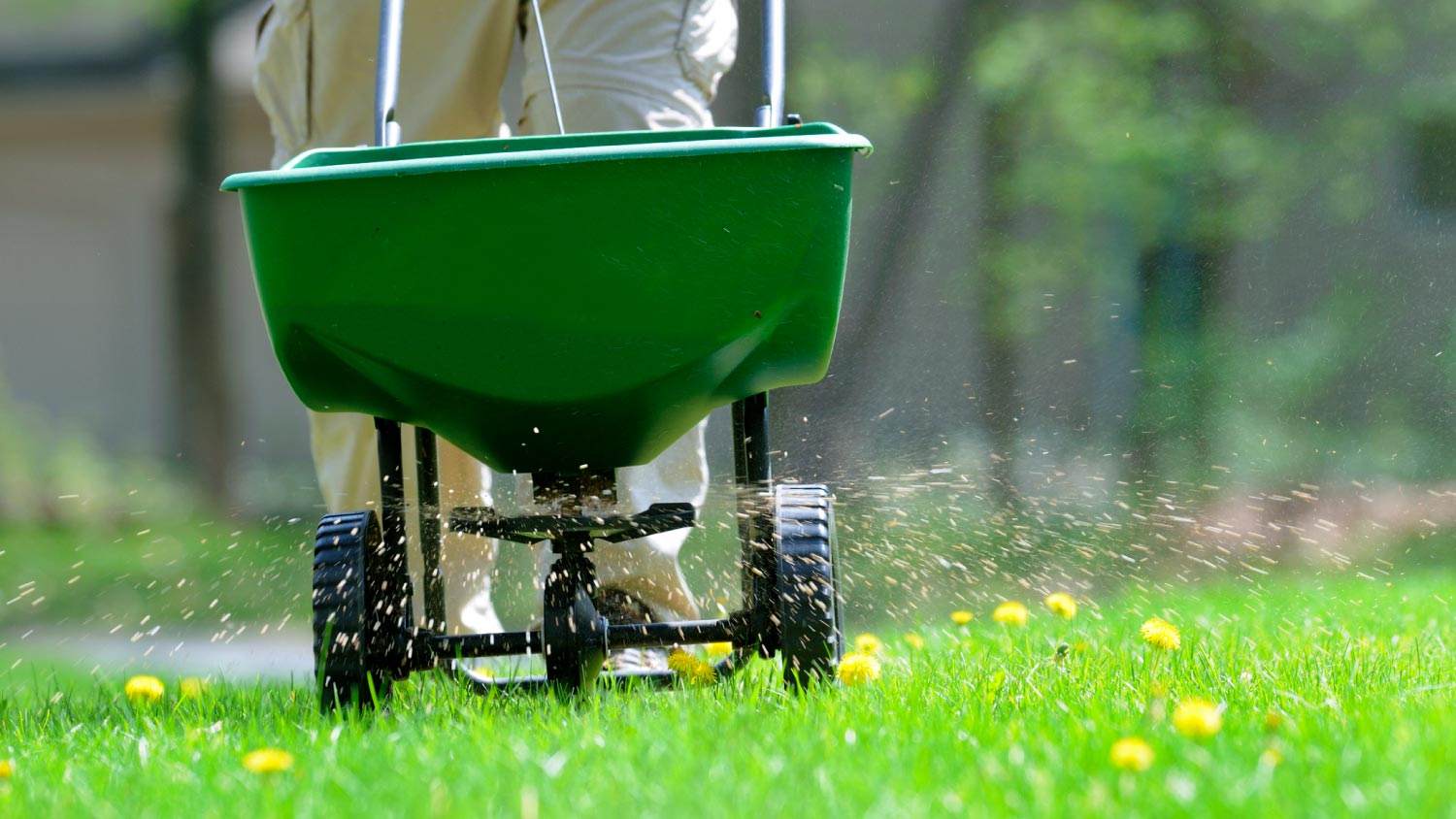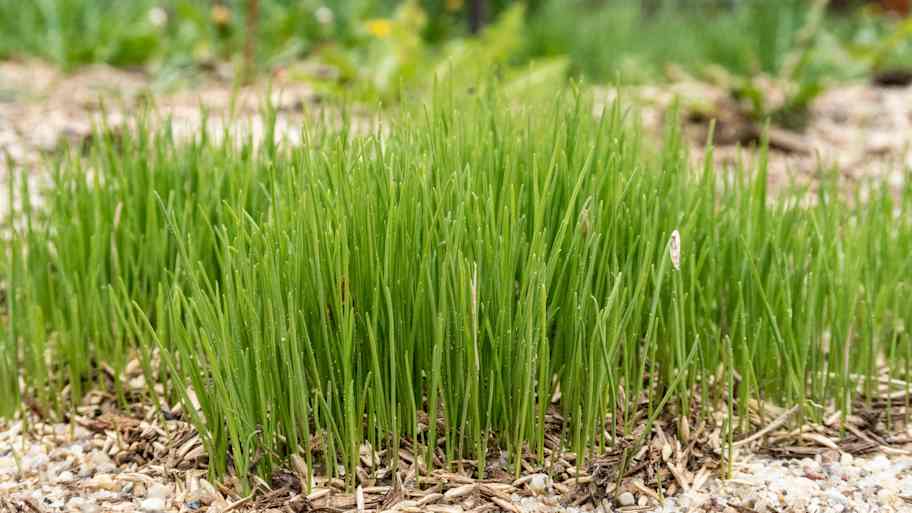
Get transparent power seeding cost info to learn what impacts pricing, how to save, and whether to DIY or hire a pro for your lawn’s best results.
The cost to fertilize a lawn averages $225, with most homeowners spending between $77 and $394 on average. Factors include lawn size, fertilizer type, frequency, and labor.


The cost to fertilize your lawn depends on lawn size and fertilizer type, ranging from $40 to $75 per 1,000 square feet.
Fertilizing improves lawn health and curb appeal, creating a thicker, greener yard.
Professional lawn fertilization saves time and offers expert application, leading to more consistent results.
Seasonal timing can impact fertilization costs, as peak growing months may increase demand for services.
Regular fertilization prevents expensive lawn repairs and helps you avoid issues like weeds and bare patches.
This article was created using automation technology and thoroughly fact-checked and edited by an Angi Editor in accordance with our AI policy.
The cost to fertilize a lawn averages $225, with homeowners paying between $77 and $394 per application on average. Prices range from $40 to $75 per 1,000 square feet, depending on lawn size, fertilizer type, and how often you fertilize. Understanding these costs helps you plan for a greener, healthier yard and avoid unexpected expenses. Whether you choose to fertilize yourself or hire a professional, we’ll walk through what impacts your costs, how to make smart choices, and what to expect from each option.

Fertilizing your lawn is a key part of home maintenance, but the price you pay can vary widely. Let’s break down the main factors that impact the cost to fertilize your lawn so you can budget with confidence.
The type of fertilizer you select plays a major role in your total cost. Homeowners can choose from granular or liquid options, as well as organic or synthetic blends. Some fertilizers are slow-release, providing nutrients over time, while others deliver a quick boost but require more frequent applications.
Organic fertilizers are more expensive upfront but improve soil health and reduce runoff risk. Synthetic fertilizers are affordable and effective but may require careful handling to avoid lawn burn. Environmental considerations also factor in—organic options are gentler on local ecosystems, while some synthetic products are regulated in certain regions.
| Fertilizer Type | Description | Cost per 50lb. (With Labor) |
|---|---|---|
| Granular | Dry pellets, easy DIY, slow/quick-release options | $125–$350 |
| Liquid | Concentrated and fast-acting | $150–$600 |
| Organic | Natural ingredients, eco-friendly, slow-release | $200–$500 |
| Synthetic | Chemical blend, fast-acting, common in stores | $100–$300 |
| Slow-release | Releases nutrients gradually, less frequent apps | $125–$500 |
| Quick-release | Immediate effect, needs multiple applications | $100–$325 |
Lawn size has a direct impact on the total cost to fertilize your lawn. Most services price by the square foot, acre, or a flat rate for small lots. The larger your yard, the more product and labor you’ll need, which increases the final bill.
For example, a small lawn 1,000 to 2,000 square feet costs less per application than a medium 5,000 square feet or large 10,000 square feet or more property.
| Lawn Size (Sq. Ft.) | Description | Average Cost |
|---|---|---|
| 500–1,000 | Small garden | $10–$80 |
| 1,000–2,000 | Small lawn, front or back | $40–$90 |
| 2,000–5,000 | Medium, suburban home | $80–$200 |
| 5,000–10,000 | Large, corner/estate lot | $150–$400 |
| 10,000+ | Very large, acre+ property | $300–$600+ |
How often you fertilize your lawn affects your total annual cost. Some lawns need fertilizing two to four times per year, depending on grass type and climate. One-time applications are less expensive but may not deliver lasting results. Recurring service plans cost more overall but offer convenience and promote a healthier lawn.
Cool-season grasses benefit from spring and fall fertilization. Warm-season types need feeding in late spring and summer. Frequent fertilization can add up, but skipping applications may result in patchy or unhealthy grass.
The cost of materials includes more than just fertilizer. Branded products cost more than generic options, and organic fertilizers are pricier than synthetic blends. Additional materials like soil amendments, weed control, or soil testing kits can also raise your total.
For homeowners who want the best results, combining fertilizer with other products (such as lime or micronutrients) can improve lawn health—but with a higher price tag.
| Type | Description | Average Cost |
|---|---|---|
| Weed and feed | Fertilizer plus weed control | $100–$325 |
| Soil testing kit | At-home pH and nutrient test | $20–$100 |
| Lime | Soil amendment for pH adjustment | $60–$200 |
Who applies your fertilizer matters, too. Lawn care companies, landscapers, and independent contractors each have their own rates. Labor is charged by the hour, per application, or per square foot. Professional lawn fertilization services include application, cleanup, and sometimes a short consultation.
Labor costs can be higher in regions with higher wages or where demand is strong. Challenging yards—like those with steep slopes, many obstacles, or complex layouts—can also increase labor time and cost.
Your geographic region plays a significant role in the cost to fertilize lawn. Urban areas have higher labor rates and service fees. Climate zones affect how often fertilization is needed—longer growing seasons mean more applications each year.
Some regions have fertilizer restrictions or bans to protect local waterways, which can limit your options and increase costs for approved products.
Tipping for lawn fertilization is not required, but it’s a nice way to show appreciation for excellent service. If you’re especially pleased with a job well done, a tip of $10 to $20 per visit is common. You might also offer a larger tip at the end of the season for ongoing contracts or if your lawn care provider went above and beyond.
The right fertilization schedule depends on your grass type and local climate. Cool-season grasses, such as Kentucky bluegrass or fescue, benefit from fertilization in early spring and fall. Warm-season grasses, including Bermuda or zoysia, should be fertilized in late spring and summer.
Aim for two to four applications per year for most lawns. In milder climates, you may need more frequent feedings to keep up with growth. Watch for signs like pale or thinning grass—these indicate your lawn needs nutrients. Skipping or delaying fertilization can lead to weeds, bare spots, and higher repair costs down the line.
Weather also plays a part: heavy rain or drought can change the timing and effectiveness of your fertilizer. Always adjust your schedule if conditions are extreme to prevent waste or lawn damage.
Many homeowners choose to bundle lawn fertilization with other lawn care services to boost results. Popular add-ons include weed control, soil testing, aeration, overseeding, pest control, and lime application. Each add-on has its own cost, but combining them with fertilization can lead to a healthier, more resilient lawn. These services add to your total cost per visit:
Weed control: $50–$150
Aeration: $80–$200
Overseeding: $0.09–$0.18 per sq. ft.
Pest control: $60 to $120
Dethatching: $160–$225
Add-ons are recommended if your lawn has persistent weeds, poor soil, bare spots, or visible pests. They can increase your upfront cost but reduce the need for expensive repairs later.
Fertilizing your lawn yourself can save money, but it requires time, knowledge, and some equipment. DIY costs include fertilizer, spreaders or sprayers, and optional items like gloves or soil testing kits.
Hiring a professional costs more per visit but includes expert application, specialized equipment, and cleanup. Pros can spot lawn issues early and recommend the best products for your yard. DIY requires careful measurement and even application to avoid lawn burn or patchy results. Professionals bring experience that can prevent common mistakes and ensure your investment pays off.
Use these budgeting tips to keep your lawn lush and your costs down:
Buy fertilizer in bulk or during seasonal sales to lower the per-application price.
Schedule fertilization during off-peak times when demand is lower.
Combine fertilization with other lawn services for possible package discounts.
Maintain regular mowing and watering to boost fertilizer effectiveness and reduce waste.
Use a soil testing kit to target your lawn’s exact needs and avoid over-applying.
Choose organic or slow-release fertilizers for longer-lasting results.
Take on simple applications yourself if you are comfortable and have the right tools.
Home is the most important place on earth, which is why Angi has helped more than 150 million homeowners transform their houses into homes they adore. To help homeowners with their next project, Angi provides readers with the most accurate cost data and upholds strict editorial standards. We’ve surveyed thousands of real Angi customers about their project costs to develop the pricing data you see, so you can make the best decisions for you and your home. We pair this data with research from reputable sources, including the U.S. Bureau of Labor Statistics, academic journals, market studies, and interviews with industry experts—all to ensure our prices reflect real-world projects.
Want to help us improve our cost data? Send us a recent project quote to [email protected]. Quotes and personal information will not be shared publicly.
From average costs to expert advice, get all the answers you need to get your job done.

Get transparent power seeding cost info to learn what impacts pricing, how to save, and whether to DIY or hire a pro for your lawn’s best results.

Discover average hydroseeding cost, key price factors, and ways to save. Get transparent estimates for your lawn project and make informed decisions for your home.

Discover average lawn aeration cost, key price factors, and tips to save. Get a clear estimate for your yard and learn how to choose between DIY and hiring a pro.

Ready to give your yard a fresh start? With these tips for grass seed planting, your lush lawn dreams are one step closer to becoming a reality.

When it comes to drop spreaders versus broadcast spreaders, knowing the differences between them will help you make the right choice for your outdoor setup.

Brown patches on your lawn may occur for several reasons, including lack of sunlight and overfertilization. Learn how to treat and prevent patches.